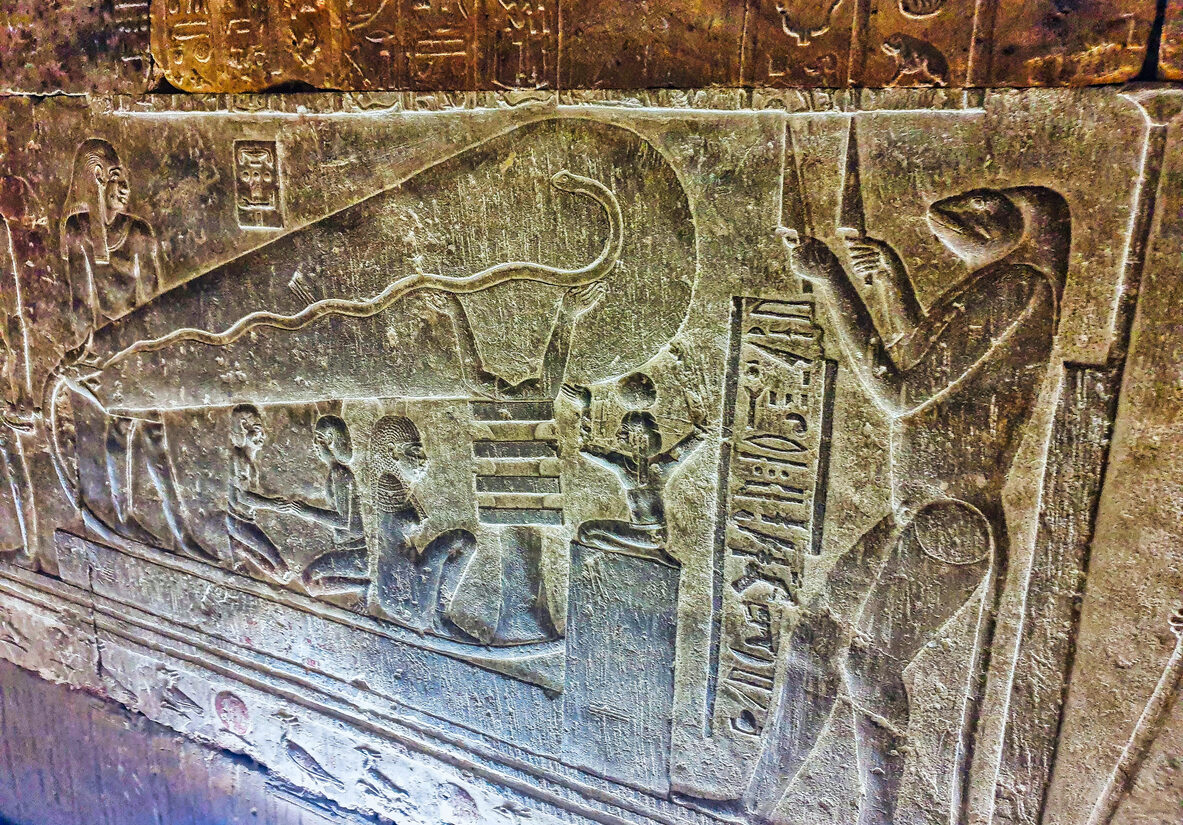Archaeological Finds That Might Prove Time Travellers Exist
- Gail Stewart
- May 18, 2025
 Getty Images
Getty ImagesTime travel might still be science fiction, but some archaeological discoveries have left researchers and conspiracy theorists completely flummoxed. Every now and then, something turns up that seems out of place, out of time, or just downright unexplainable with current knowledge. While these discoveries often have rational explanations, that hasn’t stopped people from wondering: what if someone (or something!) has been meddling with the timeline? Here are some archaeological finds that some believe point to the existence of time travellers—or, at the very least, to knowledge that shouldn’t have existed in the eras from which these artefacts emerged.
The Antikythera Mechanism
Discovered in a shipwreck off the coast of Greece in 1901, the Antikythera Mechanism is a remarkably complex device that dates back to around 100 BCE. It’s often described as the world’s first analogue computer, capable of predicting astronomical positions, eclipses, and even the timing of the ancient Olympic Games.
Its intricate system of gears and its clear understanding of celestial movement was so advanced that nothing close to it appeared again for well over a thousand years. Scientists have recreated working models, and it continues to puzzle historians. For some, it’s too precise and sophisticated to be the product of the era, fuelling theories that it was either reverse-engineered from alien or future tech, or created by someone who knew far more than they should have.
The Baghdad Battery
Found near Baghdad in the 1930s, this 2,000-year-old clay jar with a copper cylinder and iron rod is commonly known as the Baghdad Battery. Some believe it could have been used to generate a mild electric current, possibly for electroplating.
The jars show corrosion patterns that suggest an acidic liquid once sat inside, which lends some support to the theory. If true, it means people in ancient Mesopotamia had a basic understanding of electrical principles. While this doesn’t prove time travel, it certainly throws a wrench into the accepted timeline of technological development.
The London Hammer
A seemingly ordinary hammer embedded in a rock formation dated by some to be over 100 million years old was discovered in Texas in the 1930s. The tool itself looks like it was made in the 19th century, with a wooden handle and iron head.
Geologists suggest the hammer was encased in a concretion of minerals that hardened unusually quickly, but those who favour fringe theories believe this is clear evidence of a time traveller dropping a tool somewhere they definitely shouldn’t have been.
The Swiss watch in a Ming Dynasty tomb
In 2008, Chinese archaeologists allegedly uncovered a tiny object shaped like a wristwatch while unsealing a Ming Dynasty tomb that had been closed for over 400 years. Even more bizarrely, the word “Swiss” was reportedly engraved on the back.
Sceptics have dismissed the story as a hoax, but the tale spread quickly online and has since become one of the most well-known pieces of alleged time travel evidence. Whether or not the object was ever actually found, the idea of a modern watch lying in a centuries-old tomb continues to capture the imagination.
The Dendera light
Carvings in the Temple of Hathor in Dendera, Egypt, appear to depict a large, bulb-shaped object with a cable or snake-like element emerging from it. To some, it looks strikingly like a modern electric lightbulb, complete with a filament.
Mainstream archaeologists argue it’s symbolic, possibly referencing a lotus flower and serpent a common motif in Egyptian mythology. But to alternative theorists, it’s visual proof that someone either brought advanced technology to ancient Egypt or left visual evidence behind. Some go as far as to suggest it’s the result of ancient exposure to future knowledge.
The Piri Reis map
Drawn in 1513 by the Ottoman admiral and cartographer Piri Reis, this map includes highly accurate depictions of the South American coastline and even portions of Antarctica, long before the continent was officially discovered or charted.
The accuracy of the southern portion, particularly the inclusion of what some believe to be an ice-free Antarctic coastline, has baffled researchers. Was this map compiled from even older maps, as Piri Reis himself claimed? Or was there an unknown source of knowledge, one that some suspect may not have come from the 16th century at all?
The Voynich Manuscript
A baffling codex filled with undecipherable script and bizarre botanical illustrations, the Voynich Manuscript dates to the early 15th century. Despite being studied by cryptographers, linguists, and computer scientists, no one has successfully decoded its content.
Some believe it’s an elaborate hoax, but others argue that the writing system is too complex to be meaningless. A few fringe theorists suggest it may be a manual from the future, or an alien culture, accidentally left behind by a time traveller with a poor grasp of Earth’s languages.
The “Out-of-Place” coin in Mexico
A man in Mexico reportedly found a coin inscribed with the year 2039 during a construction project in the early 2000s. The coin also bore unfamiliar insignias that resembled modern corporate or national emblems but didn’t match any known country.
Though there’s no academic record of the discovery, and many believe it’s simply a hoax or prank, the story persists as one of the more colourful examples of alleged time-travel evidence. Loose change, it seems, could be the undoing of a careless temporal tourist.
The Dropa stones
Discovered in the Bayan Har mountains of China in the 1930s, the Dropa stones are circular stone discs with a hole in the centre and spiral grooves etched into their surfaces. Some researchers claimed these grooves contained microscopic inscriptions detailing a visit from extraterrestrials, or possibly time-travelling humans.
Mainstream archaeologists have dismissed the stones as misidentified or even fabricated, but they continue to be a favourite among ancient astronaut and time travel enthusiasts alike. Some believe the stones’ grooves contain messages written in a language not native to any known civilisation.
The 3,000-year-old aluminium wedge
In 1974, construction workers near Aiud, Romania, unearthed an object buried with mastodon bones. The artefact resembled a modern piece of machinery and was made largely of aluminium, a material not discovered until the 1800s.
Though later analysis cast doubt on the original dating, and some argued it could be modern debris that ended up buried with the bones, the fact remains that its composition raised serious questions. If authentic, it would imply knowledge of metallurgy centuries before it was supposedly invented.
The Klerksdorp spheres
Found in South African mines, these small spherical objects are dated to around 3 billion years ago. Some of them appear to have grooves running around their circumference with surprising regularity, which has led to speculation about intelligent design.
Geologists generally classify them as natural formations created by sedimentary concretion, but their symmetry and polish continue to spark fringe theories. Could they be tools or objects left behind by advanced visitors—or time travellers—eons ago?
The medieval astronaut sculpture
In the Spanish cathedral of Salamanca, a curious figure decorates the entrance—an astronaut, complete with suit and visor. Though the cathedral was built in the 12th century, the figure was added during restoration work in 1992.
This is one of the few examples that actually has a rational, documented explanation, but that hasn’t stopped it from being circulated online as a mysterious anachronism. It’s a reminder of how easily time travel myths can take root, even when the truth is readily available.
While most of these discoveries have plausible explanations, or at least some sceptical counterpoint, they continue to inspire wonder. Whether you see them as misunderstood artefacts, elaborate hoaxes, or potential breadcrumbs from the future, they show how much we still don’t understand about the past. Time travel remains unproven, but these strange findings keep the door open to the possibility that maybe, just maybe, someone got here early.



